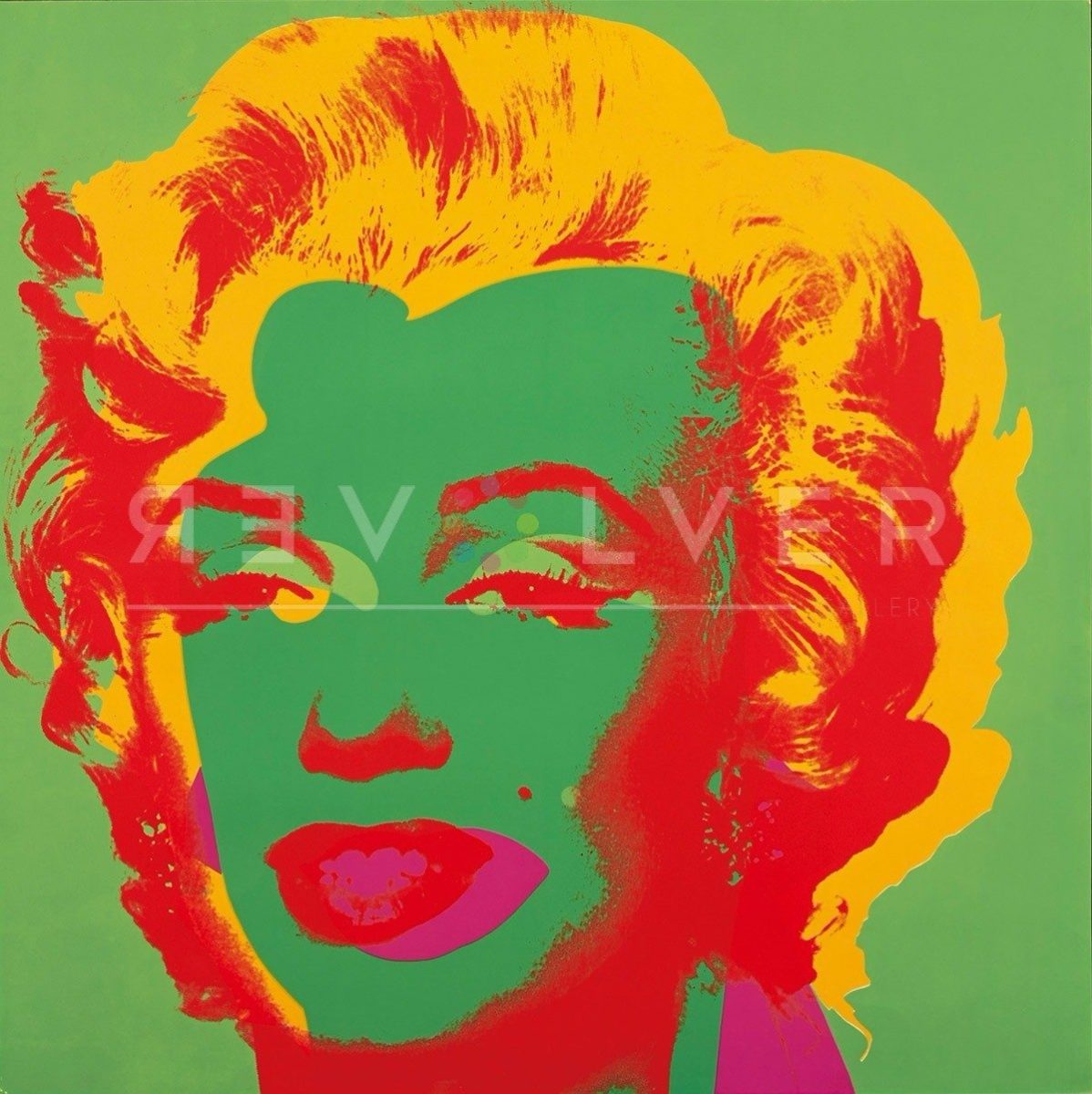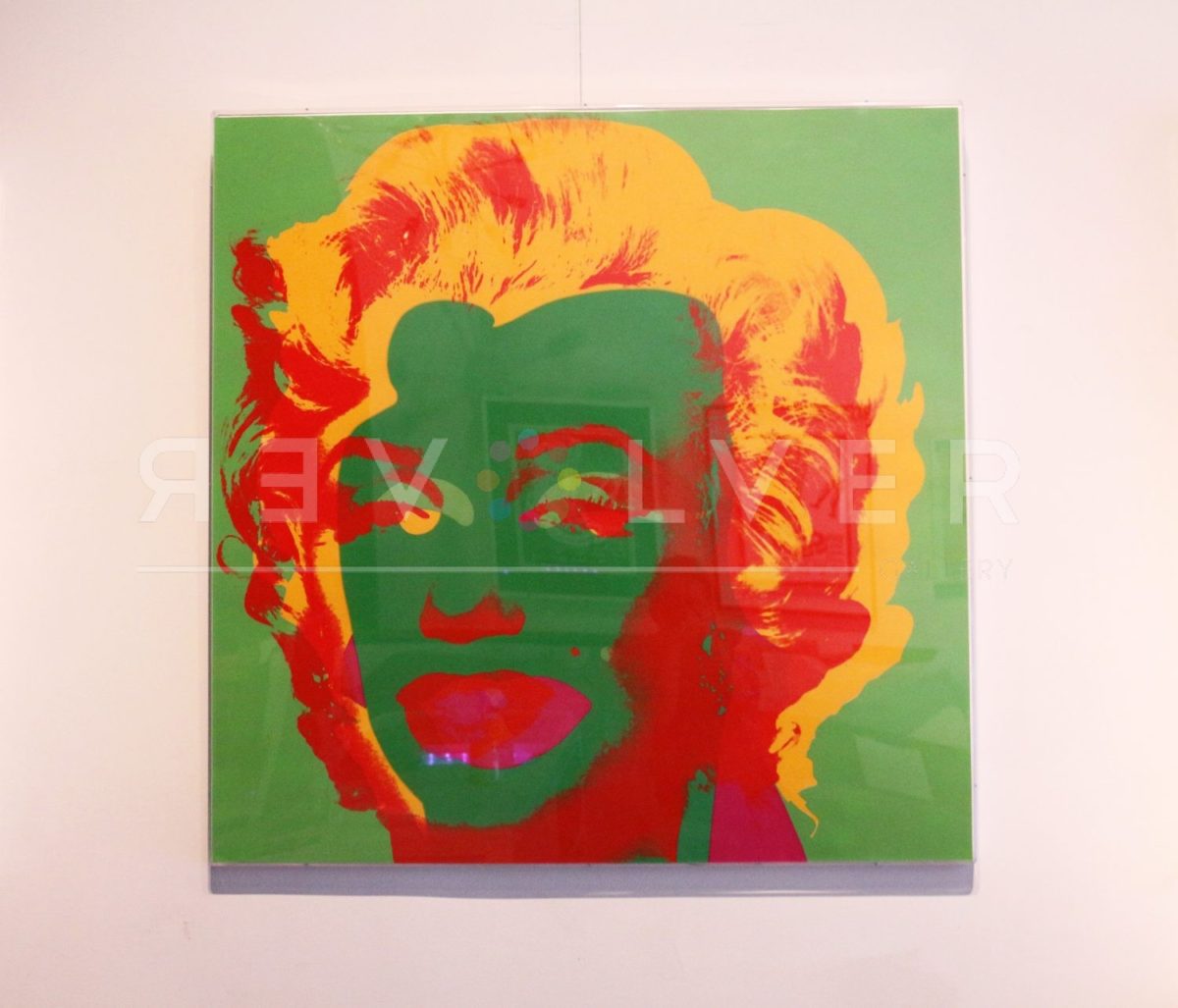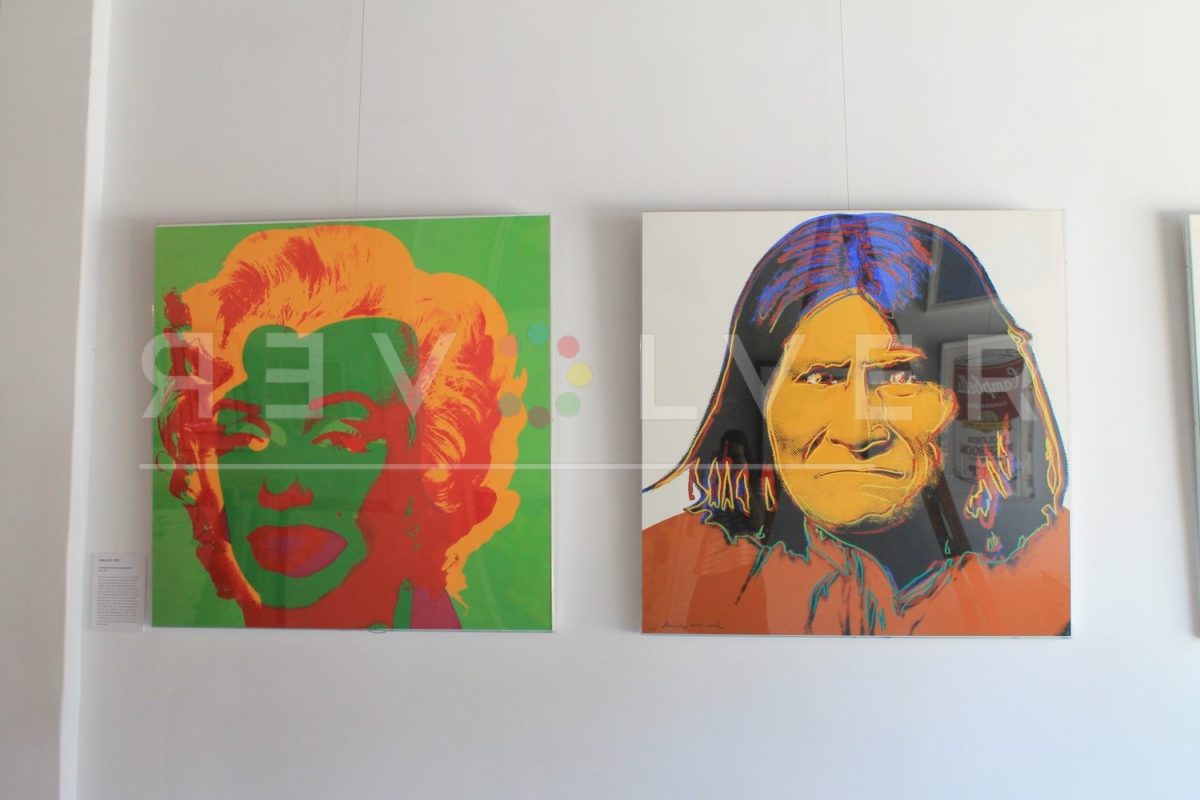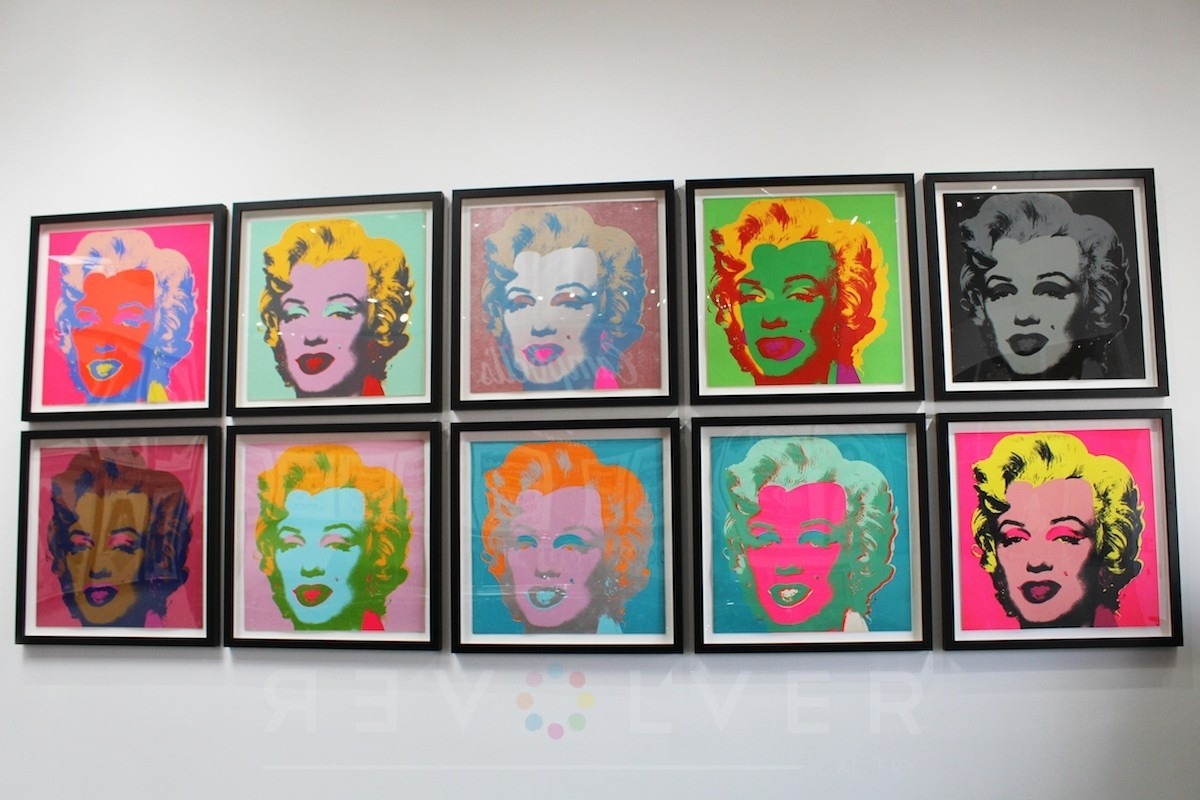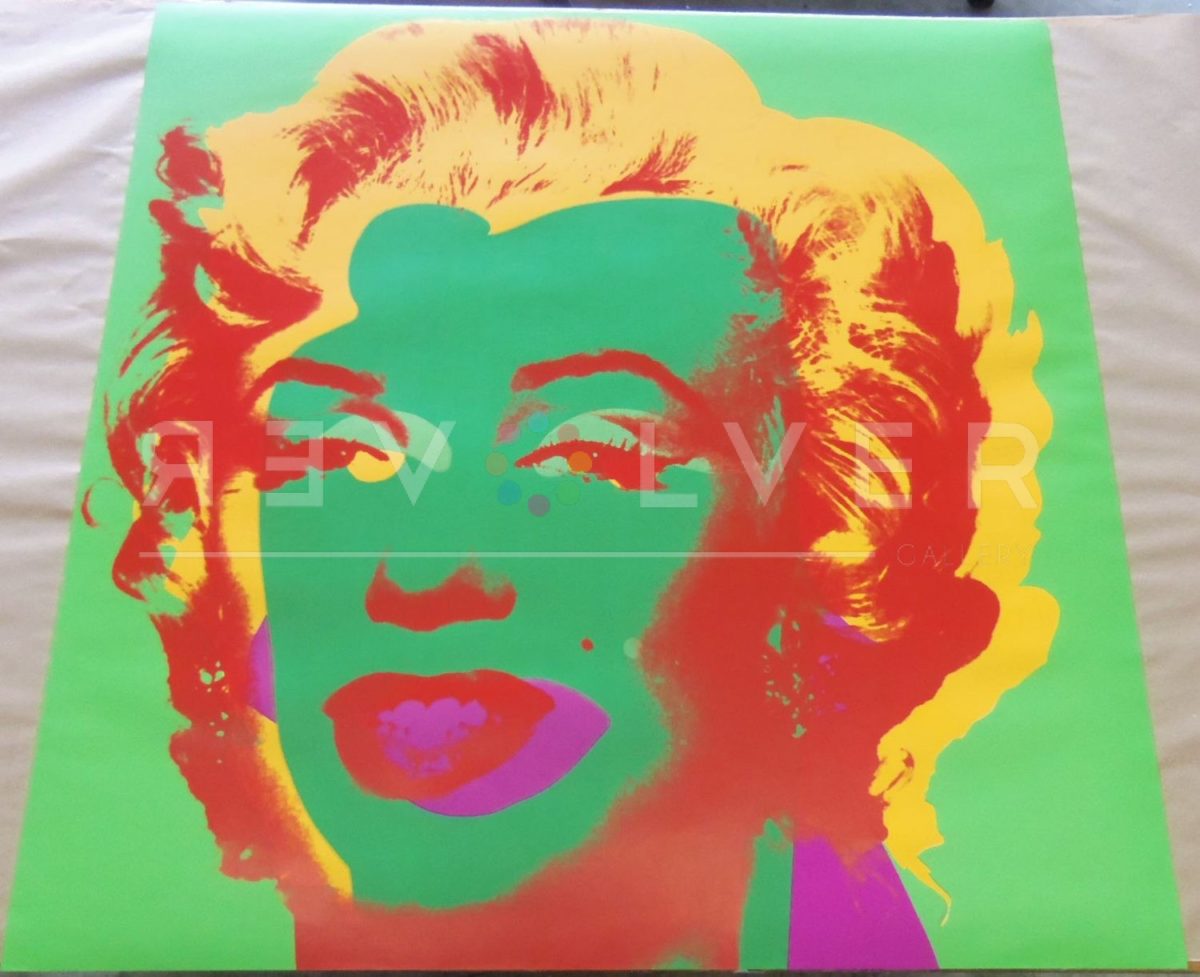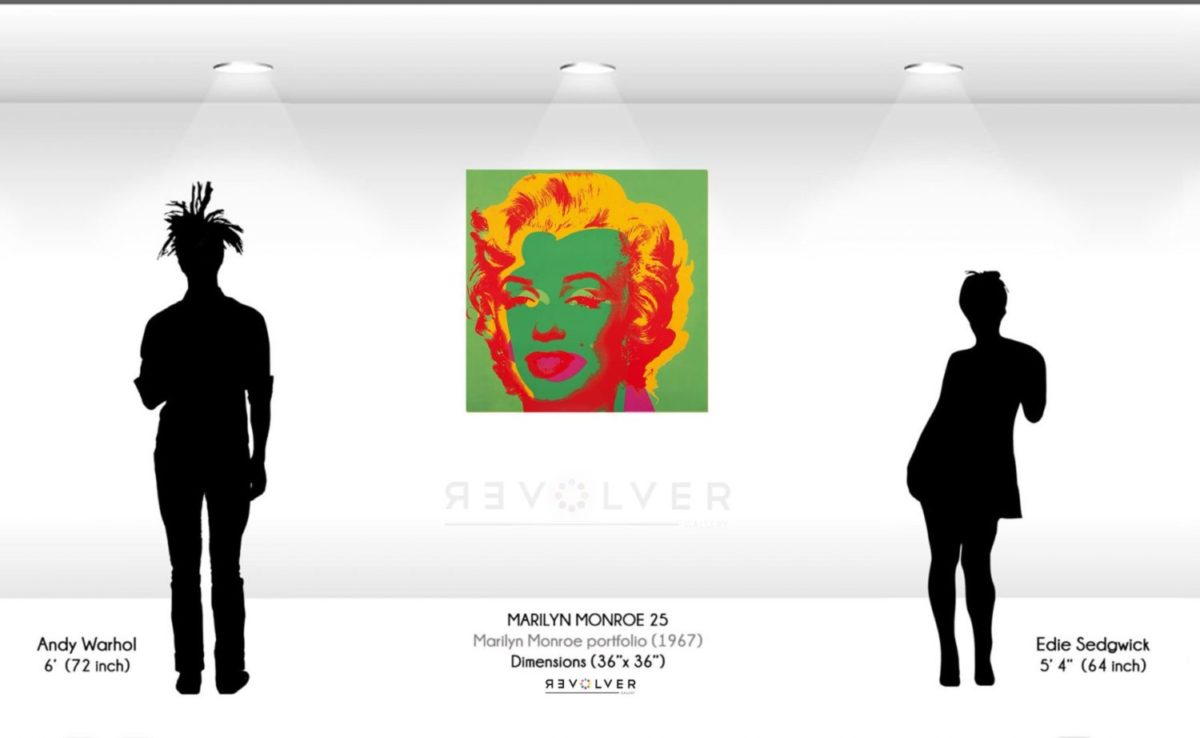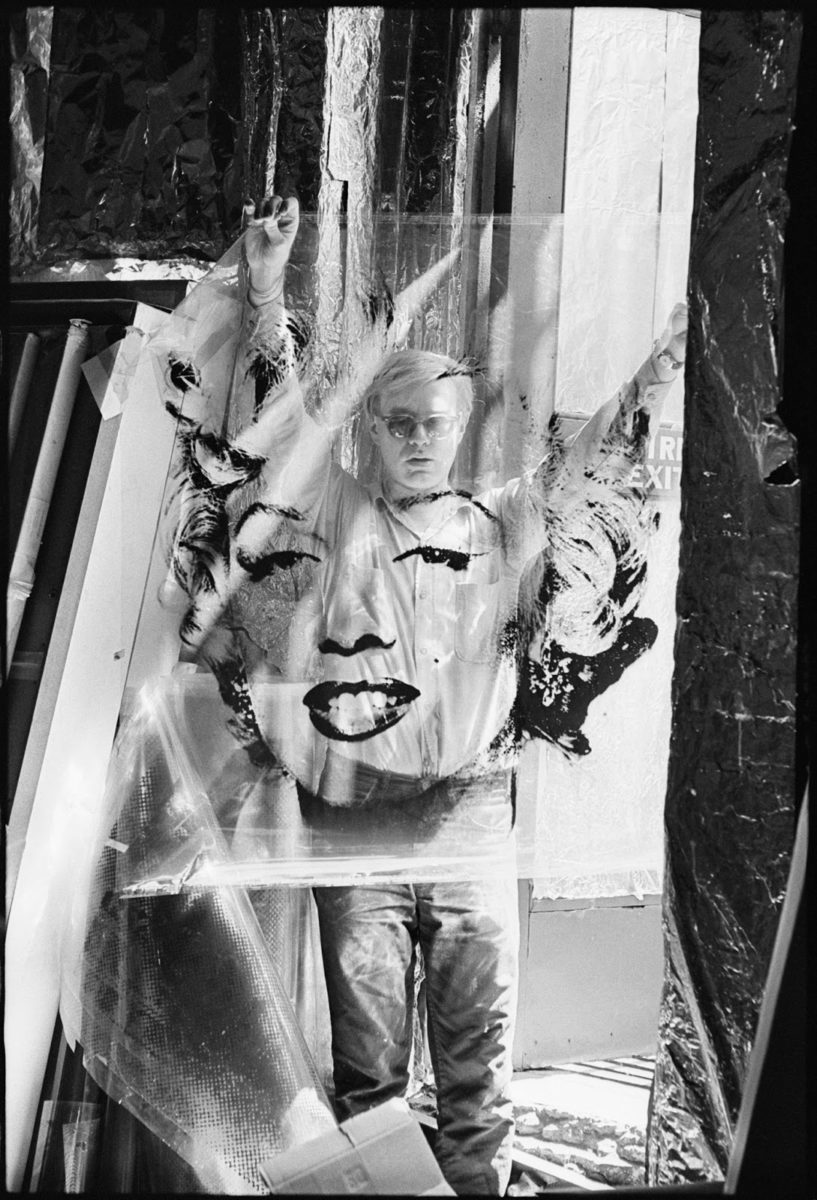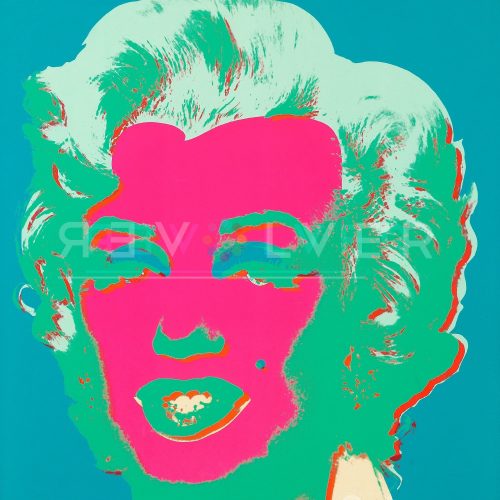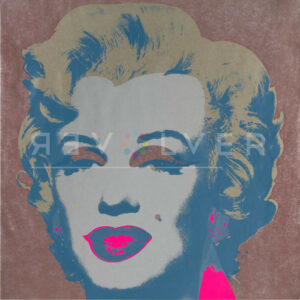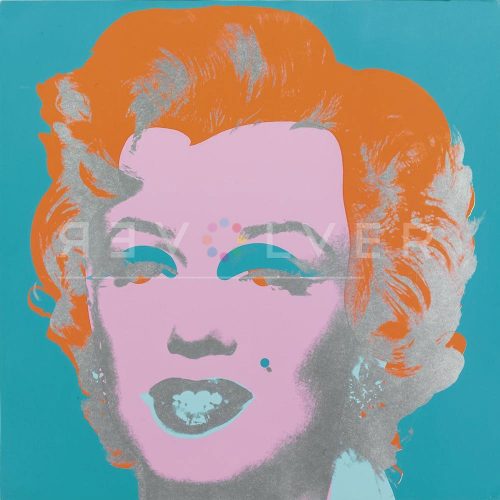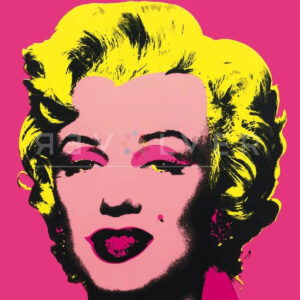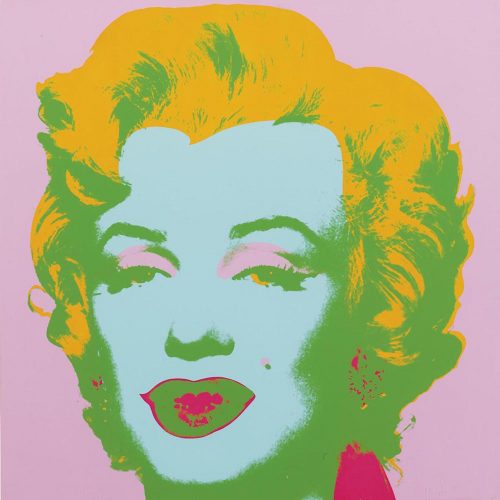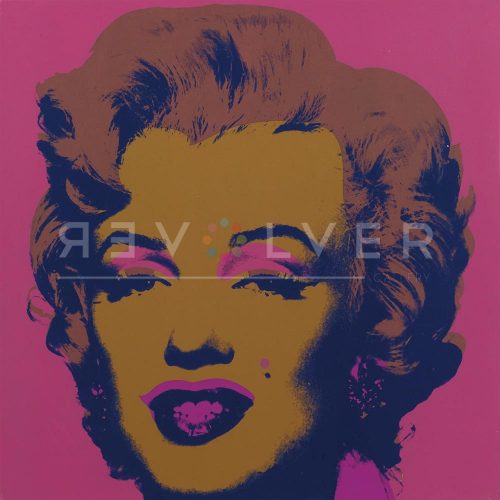Marilyn Monroe 25, sometimes referred to as the green Marilyn, is one of 10 screen prints from Andy Warhol’s 1967 Marilyn Monroe portfolio. Warhol’s “Marilyn” images vary in color, presenting the celebrity in a variety of moods. Experimenting with screen printing, Warhol used different inks and layering techniques to create the vibrant portraits. As one of his most iconic images, Marilyn Monroe 25 directly refers to the pop culture of the era, and depicts Monroe as the quintessential celebrity. Marilyn expresses the bright and bold colors of the Pop Art movement, of which the Marilyn portraits have become emblematic.
Interested in fame, glamour, and celebrity life, Andy chose Marilyn Monroe as his perfect muse. He first silkscreened Monroe in his work titled Marilyn Diptych in the weeks following her death in 1962. His decision to create the infamous portraits after Monroe’s suicide reflects Andy’s grasp on the sensationalism surrounding celebrities in America. Specifically, he noticed how her reputation would transform after her suicide, and cause her fame to evolve. Thus, her image as an icon of sex, fashion, and beauty, and her untimely death, make her a powerful symbol of American culture.
Warhol’s Marilyn portraits also reflect his fascination with consumer culture and the thriving postwar economy of the 50s and 60s. During his career, Warhol depicted celebrities like Mick Jagger, Marlon Brando, and Liz Taylor. Just like his work with Campbell’s Soup Cans, Warhol recreates an object of mass-consumption. With his celebrity portraits, Warhol preys on themes like the commodification of identity, and the visual diet of American culture. He presents Marilyn Monroe as a mass-produced object, enjoyed and consumed by people all across the country.
Warhol based the Marilyn portraits on a publicity photo allegedly taken by Gene Korman for Marilyn’s 1953 film Niagara. Because he chose to use someone else’s photograph as a readymade for the basis of his prints, the images became somewhat controversial. They sparked conversation about the extent to which an artist can reproduce images before it becomes an issue of copyright. Moreover, the prints created a debate about an artist’s ability to retain their integrity while using such methods. Regardless, the Marilyn series was highly successful upon publication.
Ultimately, Warhol’s Marilyn images are some of his most famous and recognizable works. They reflect Warhol’s fascination with American pop culture and the dynamics of celebrity life, including how the public praises celebrities. Perhaps this is why Warhol presents Marilyn in sheer colors, and showing no imperfections. This style effectively illustrates Marilyn as she is imagined, as something above ordinary human life: as an image, not a person. Furthermore, Warhol is said to have created “an icon out of an icon,” doubling Marilyn Monroe’s legacy within visual art and the world of commercial entertainment.
As one of Andy Warhol’ greatest works, Marilyn Monroe 25 is a significant piece of modern art history. The enigmatic series allowed Andy to breach the front lines of the Pop Art genre and become a vanguard of the new movement.

